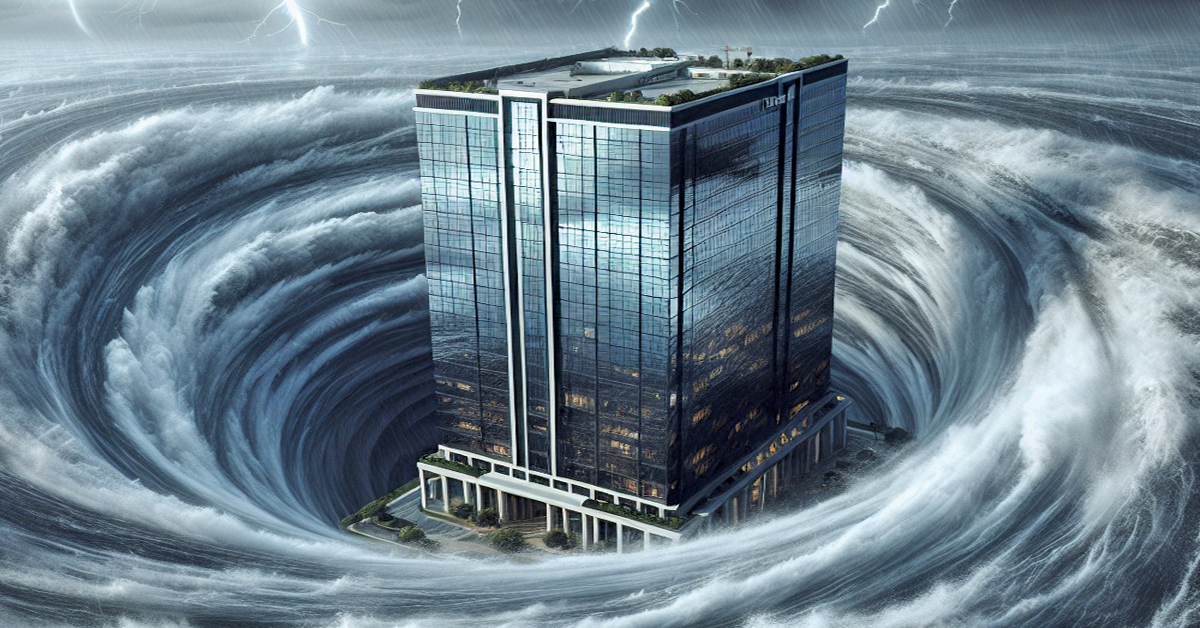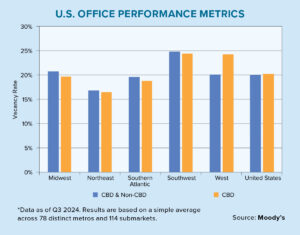If you want an example of just how crazy office tower valuations have become, look no further than Burnett Plaza, the tallest building in bustling Fort Worth, Texas. The massive 40-story structure was purchased via foreclosure auction for $12.3 million in May. Three years ago, the same building was sold for about $137.5 million. In other words, this tower has lost more than 91% of its value in three years.
It doesn’t appear that Burnett Plaza was just an anomaly. In late April, an empty 16-story building in San Francisco that once housed the headquarters for Burning Man and boasted a WeWork space, sold at auction for $6.5 million, a nearly 90% drop from its 2016 sale price of $62 million.
In May, the sale of a Seattle downtown mall and an adjoining parking garage fared little better. The properties sold for $88 million, just a quarter of the last purchase price.
Across the country, commercial markets are beginning to see signs of the slow-motion financial disaster that professors and pundits have been promising in recent years. One of the scary things for the commercial real estate industry is that this is not something that is isolated to downtown Los Angeles and Manhattan. It seems to be spreading widely, from the Sun Belt to Seattle.
It’s a situation Stijn Van Nieuwerburgh had predicted. The Columbia University finance and real estate professor was one of the authors of the 2022 academic paper, “Work from Home and the Office Real Estate Apocalypse.” The paper was something of a sensation, introducing the idea that some office sectors could see long-term valuation losses of up to 60% by 2029, if the work-from-home movement continues.
A follow-up paper by Nieuwerburgh sealed his commercial real estate celebrity status by introducing yet another scary concept, the urban doom loop. The idea being that empty office buildings lead to failing support businesses, which set off a downward spiral in urban centers. The resulting drop in tax receipts leads to the inability of cities to keep urban centers clean and safe. This, in turn, exacerbates the problem, leading to more businesses fleeing to the suburbs and creating worse urban conditions.
For the past two years, everyone from bankers to CNBC to the White House has sought Nieuwerburgh’s outlook on the real estate industry. I recently spoke with the “prophet of urban doom,” as The New York Times has labeled him, about where he stands on the current valuation crisis. He said the recent wave of forced sales are for distressed properties and are not indicative of the market as a whole.
While he and his colleagues were called “alarmists” by some critics, Nieuwerburgh said their predictions, for the most part, have proven accurate. If anything, he’s surprised by the massive discounts that he is seeing for some properties.
“Buildings selling for 10% of their prior trading price is obviously not an average,” Nieuwerburgh said. “So, my model predicts an average of about 50% decline in office values. That is my best guess. The largest declines are in San Francisco. But it obviously varies from building to building and in real estate, everything is location.”
Even though the work-from-home trend has moderated, Nieuwerburgh said there is at least 20% too much office supply. The only way to stabilize the market is to remove the extra supply through conversion or demolition. As far as how long this process will take, he estimated that about half the active office tenants in the country have not yet faced a lease renewal since COVID-19. When that happens over the next few years, those tenants are expected to reduce their office footprint, and that will further weaken the sector.
More empty office space coupled with the need in the coming years to refinance building mortgages will cause more trouble. Nieuwerburgh said the delinquency rate on office buildings has already quadrupled to about 8% in the past year, and there is more to come. “I think it’s too early to call the bottom,” Nieuwerburgh said. “I expect this to drag on for maybe another three years until substantially all of the leases have come up for renewal.”
He said this process has multiple cycles that have to play themselves out over the coming years, including a wave of bank failures that could cause more stress to the system. Some industry observers have predicted as many as 400 banks may fail, with more being acquired, in the coming years due to toxic commercial real estate loans.
Nieuwerburgh said he expects many banks to fail, possibly 100, and they will be the smaller local banks or regional banks, which are the main source of office loans. But he maintains it’s difficult to know for sure the extent of the problem for local banks.
“I think the truth is that nobody knows what they have on their books except for the banks themselves,” Nieuwerburgh said of smaller institutions. “We really only have a good grip on the largest banks because they get stress-tested every year by the Federal Reserve. We know that only about 25% of commercial real estate is with the larger banks. But those loans are the bread and butter of many small and regional banks.”
When asked if he had changed his mind about any of his predictions, Nieuwerburgh said that one aspect of the urban doom loop that he hadn’t appreciated was how long the tax system takes to respond to changes in commercial real estate. He estimates that about 10% of the average city’s tax receipts come from commercial properties. While those cities will lose a sizeable amount of taxes from office buildings, it takes a long time to figure out how much.
“The part that I think I’ve slowly realized over the past few years is that we are in the very, very early innings of this crisis,” Nieuwerburgh said. “It’s going to take a while for the fiscal implications to become clear because there is so much delay in the system, and this is such a slow-moving crisis that it’s going to take multiple years before the tax assessments are finally going to reflect new market values.” ●








